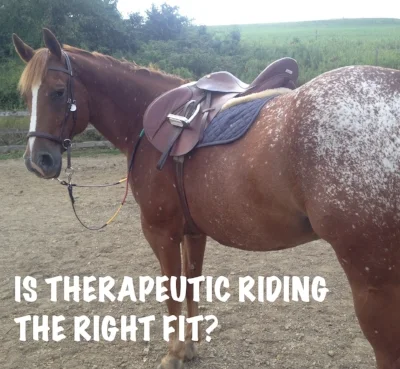Is Therapeutic Riding the Right Fit?
I've been asked many times by potential participants and parents, if therapeutic riding is the right fit for them or their child. I thought I'd take this chance to explain some variables that disqualify participants and, more importantly, qualities that make them a great match for therapeutic riding.
Precautions and Contraindications
Based on a compilation of databases, PATH Intl. puts together a list of conditions that present "precautions" and "contraindications" to equine activities. In other words, these are conditions that may need special attention or awareness for riders to participate, or in some cases would indicate a rider unsuitable for equine activity. These are compared with the physician's statement - which is required for each participant. Based on the medical professional's information, and the relevant precautions and contraindications, the instructor can make an educated decision for the participant. You might think these guidelines limit a participants eligibility, but it's quite the opposite. Because of these written guidelines, instructors are able to take into consideration conditions that may become a concern and make accommodations accordingly, rather than dismissing a rider because of lack of knowledge on the disability.
Accommodations
With the precautions and contraindications in mind, a PATH Intl. Certified Therapeutic Riding Instructor can make the proper adjustments to suit many riders. You would be surprised by the challenges that we can overcome in a lesson. Scared or squirming participants are no match for the smiling faces of our instructor and volunteers. Therapeutic riding is an adaptable and creative industry that thrives on diversity and new challenges. We are excited to find new ways to help each rider overcome their individual obstacles in life, in a safe and fun environment. We welcome all types of personalities, interests, and abilities at our center.
Alternatives
While we make every effort to accommodate all types of individuals, sometimes therapeutic riding is simply not the right fit. This could be based on weight, age, or severity of medical conditions. In cases like this, we might suggest an alternative form of equine activity, such as Equine Assisted Learning (EAL) that involves unmounted horsemanship activities.
The best way to find out if you, or someone you know, is a viable candidate for therapeutic riding, is to contact us! We will be happy to meet and evaluate the options together.

